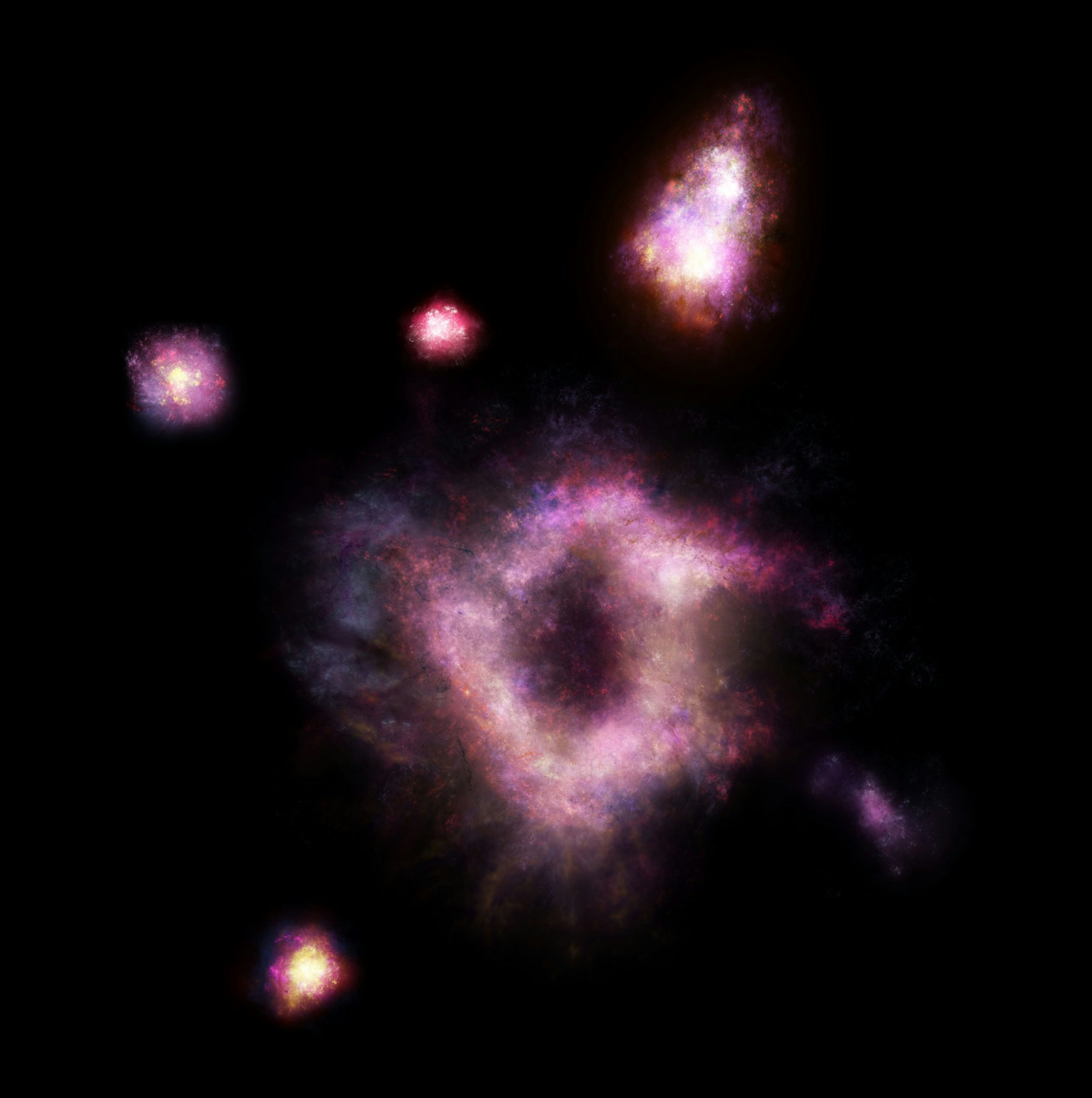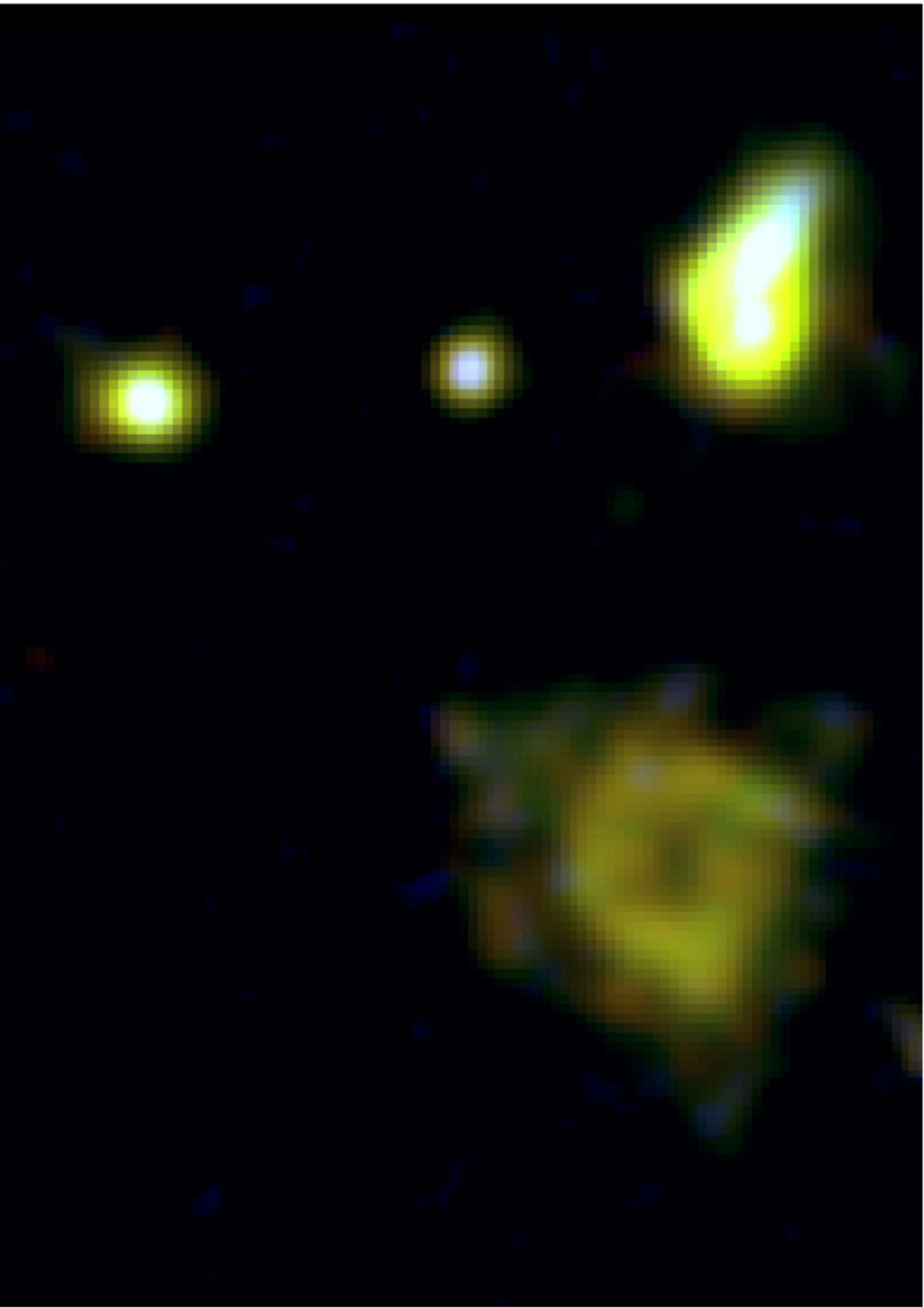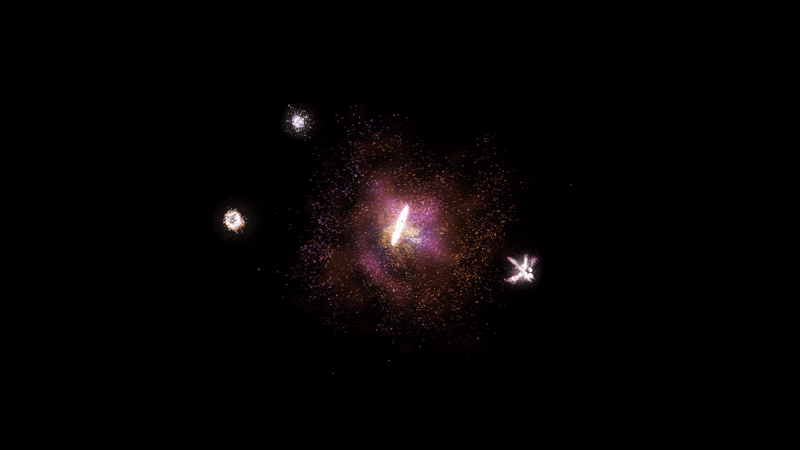
In the vast and every-expanding universe, most galaxies resemble our own. The Milky Way is a spiral galaxy, with a flat rotating disk that contains gas, dust and thousands of stars.
However, astronomers recently captured images of a super rare type of galaxy, referred to as a 'cosmic ring of fire,' in the early universe that may just change leading theories of how galaxies form and evolve over time.
The discovery was detailed in a study published Monday in the journal Nature Astronomy.

The team of researchers used spectroscopic data gathered by the WM Keck Observatory in Hawaii and images recorded by NASA’s Hubble Space Telescope to capture the images of the galaxy.
The newly discovered galaxy was dubbed R5519, and is located approximately 11 billion light years away. That means it exists in the early years of the universe, less than 3 billion years after the Big Bang.
The study suggests that the galaxy is a collisional ring galaxy, which would make it the first one ever detected in the early Universe. As the name suggests, galaxy R5519 likely formed as a result of a violent collision between two galaxies, which is a 1,000 times more rare than other types of galaxies to be found during the universe's infancy.
“The collisional formation of ring galaxies requires a thin disk to be present in the ‘victim’ galaxy before the collision occurs,” Kenneth Freeman from the Australian National University, and co-author of the study, said in a statement. “The thin disk is the defining component of spiral galaxies: before it assembled, the galaxies were in a disorderly state, not yet recognizable as spiral galaxies.”
The galaxy is shaped like a slightly deformed circle with a rather massive hole in the middle.
That massive hole stretches across a diameter that is two billion times longer than the distance between the Earth and the Sun, and is about three million times larger than the diameter of the supermassive black hole in the galaxy Messier 87, well-known for the first image ever captured of a black hole in April, 2019.
“It is a very curious object that we’ve never seen before,” Tiantian Yuan, a researcher at Australia’s ARC Centre of Excellence for All Sky Astrophysics in 3 Dimensions (ASTRO 3D), and lead author of the new study, said in a statement. “It looks strange and familiar at the same time.”

The galaxy got its stage name, the 'cosmic ring of fire' based on its surrounding ring where most of its galactic activity is taking place. And it's quite the active galaxy, making stars at a rate that is 50 times greater than that of the Milky Way, according to the researchers.
The discovery of the collisional ring galaxy can help scientists better understand how galaxies like the Milky Way came to be. The collision that birthed this galaxy was likely of one with a spiral galaxy like our own since that thin disk is crucial for galaxy formation.
The Milky Way is that it is on its own collision course with a neighboring galaxy, Andromeda, where the pair will eventually merge in about 4 billion years or so to form a larger galaxy that may be of a similar size to this ancient beast.
Abstract: In the local (z ⇠ 0) universe, collisional ring galaxies make up only ⇠0.01% of galaxies1 and are formed by head-on galactic collisions that trigger radially propagating density waves2–4. These striking systems provide key snapshots for dissecting galactic disks and are studied extensively in the local universe5–9. However, not much is known about distant (z > 0.1) collisional rings10–14. Here we present a detailed study of a ring galaxy at a look-back time of 10.8 Gyr (z = 2.19). Compared with our Milky Way, this galaxy has a similar stellar mass, but is 1.5-2.2⇥ larger in stellar half-light radius and is forming stars 50⇥ faster. The large diffuse stellar light outside of the star-forming ring, combined with a radial velocity on the ring and an intruder galaxy nearby, provides evidence for this galaxy being the most distant collisional ring confirmed to date. If the ring is secularly evolved15, 16, the implied large bar in a giant disk would be inconsistent with the current understanding of the earliest formation of barred spirals17–21. Contrary to previous predictions10–12, this work suggests that massive collisional rings are as rare 11 Gyr ago as they are today. Our discovery offers a unique pathway for studying density waves in young galaxies, as well as constraining the cosmic evolution of spiral disks and galaxy groups







